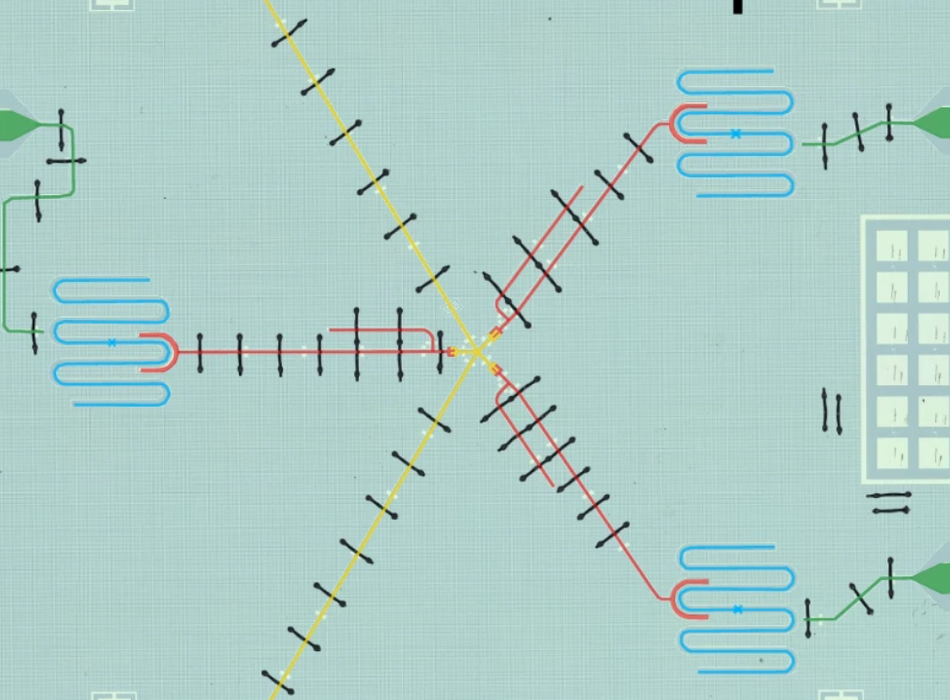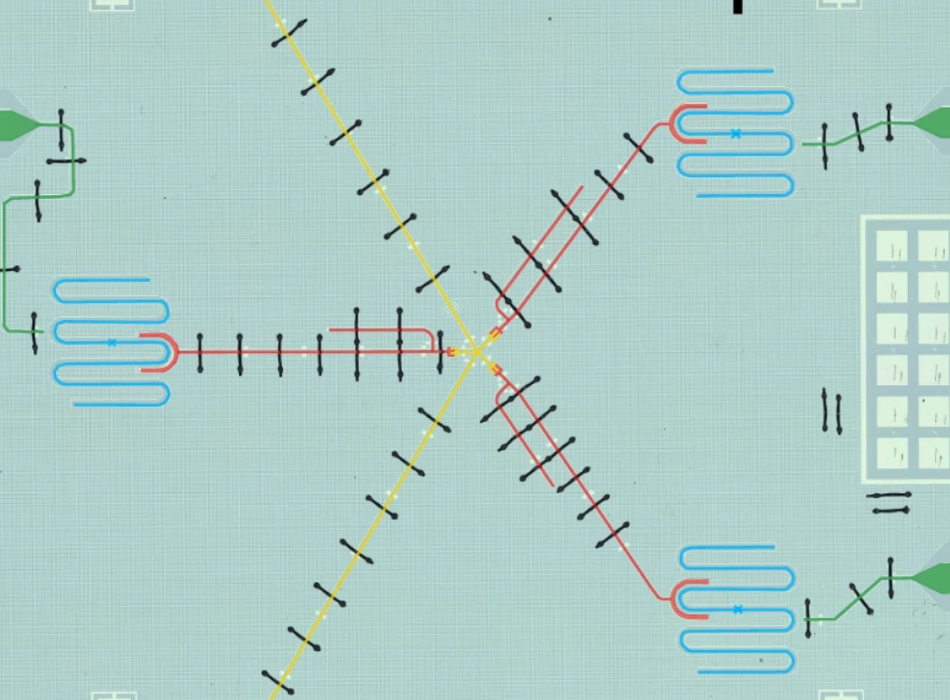Meet the Unimon, the New Qubit on the Block
Physicists developing quantum computers have increasingly turned to a superconducting element called the transmon to store quantum information and protect it from noise. Now researchers have demonstrated a related circuit element, the unimon, which they say is less prone to disruption by noise [1]. With further development, the team behind the unimon thinks that it could be used to build quantum computing systems with higher computing accuracy than those that use transmons.
A key challenge in making a quantum computer is protecting the sensitive computing elements from environmental noise, which can cause errors in computations. The most accurate transmon—a popular superconducting qubit—today achieves accuracies of between 99.98 and 99.99% for a single computing step (one transmon performing one logical operation). Although this accuracy seems impressive, a hypothetical device containing 100 transmons and running calculations with ten computing steps would only have a 50% chance of yielding a correct result, says Mikko Möttönen of Aalto University, Finland, and IQM Quantum Computers, the company behind the unimon. Future quantum computers will likely contain far more qubits and their computations many more steps, and so will perform much worse.
Some quantum computing methods can partially correct such errors. Even so, researchers agree on the need to raise the accuracy of single-step computations well beyond 99.99%. To do so, Möttönen and colleagues designed what they say is a “surprisingly simple” qubit, which they call the unimon.
Transmons are built from superconducting circuits and key elements called Josephson junctions, with capacitors and other elements also included to reduce sensitivity to noise. Like any qubit element, a transmon can take on multiple different quantum states. Researchers generally use the lowest two states to store quantum information. They then shift transmons from one state to another using a microwave photon pulse that has a frequency matching the energy difference between the states, which are equally spaced relative to one another.
This equal spacing, known an harmonicity, is behind a key limitation of current transmons, as it means they can easily be excited into states not used for quantum computing. For example, if a transmon absorbs two photons rather than the normal one, it will move into a state above the two used for information storage, inducing an error. Harmonicity also limits computing speed because using shorter microwave pulses, which make computations quicker, makes errors more likely.
For these reasons, Möttönen and colleagues sought to create a superconducting qubit with a high anharmonicity—unequally spaced energy levels. In the process, they also streamlined its structure. “When we started, we wanted a very simple circuit, as it’s easier to build larger computing systems using simple elements,” Möttönen says. Ultimately, the team chose a design with a single Josephson junction placed inside a superconducting resonator. The device is “the simplest device we could come up [with] that might act like a good qubit,” he adds.
In a series of tests on three different unimon devices, the team found single-step computing accuracies of around 99.9%, not far below the current accuracy of the best transmon systems. As a result, they expect the unimon to take a significant place in ongoing computing research. “The fact that the very first unimon[s] ever made work so well gives plenty of room for further optimization,” Möttönen says.
The unimon “is an important new qubit” in the superconducting quantum computing toolbox, says electrical and computer engineer Thomas Roth of Purdue University in Indiana. “In addition to the larger anharmonicity, this qubit should be easy to manufacture and should allow designers many options for optimization that were not possible with earlier qubit designs.”
The next step for the team, Möttönen says, is to demonstrate comparable accuracies in more complicated two-unimon-qubit circuits, which will be required in building up to more complex computing systems. The group also hopes to optimize the design to achieve accuracies beyond 99.99%.
–Mark Buchanan
Mark Buchanan is a freelance science writer who splits his time between Abergavenny, UK, and Notre Dame de Courson, France.
References
- E. Hyyppä et al., “Unimon qubit,” Nat. Commun. 13, 6895 (2022).





